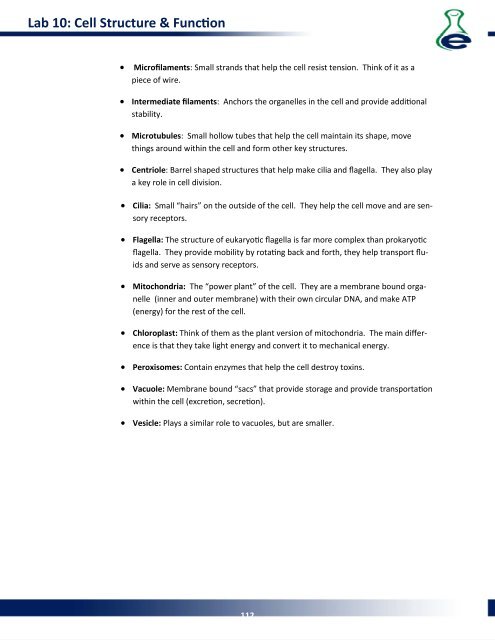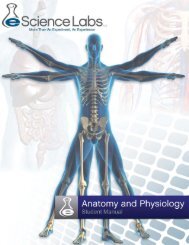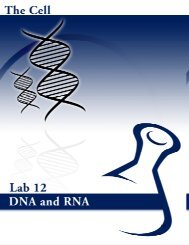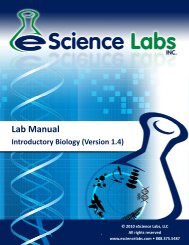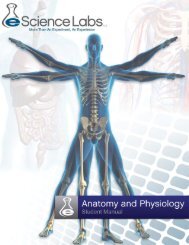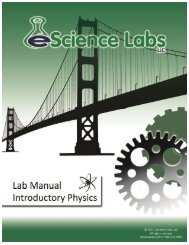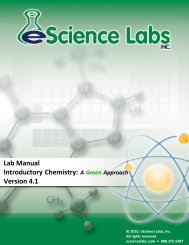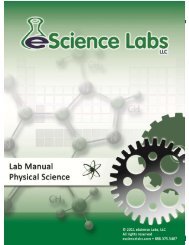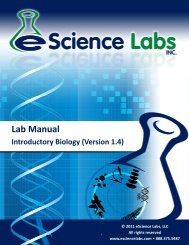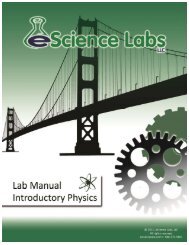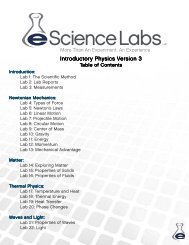Lab Manual - eScience Labs
Lab Manual - eScience Labs
Lab Manual - eScience Labs
Create successful ePaper yourself
Turn your PDF publications into a flip-book with our unique Google optimized e-Paper software.
<strong>Lab</strong> 10: Cell Structure & Funcon<br />
• Microfilaments: Small strands that help the cell resist tension. Think of it as a<br />
piece of wire.<br />
• Intermediate filaments: Anchors the organelles in the cell and provide addional<br />
stability.<br />
• Microtubules: Small hollow tubes that help the cell maintain its shape, move<br />
things around within the cell and form other key structures.<br />
• Centriole: Barrel shaped structures that help make cilia and flagella. They also play<br />
a key role in cell division.<br />
• Cilia: Small “hairs” on the outside of the cell. They help the cell move and are sensory<br />
receptors.<br />
• Flagella: The structure of eukaryoc flagella is far more complex than prokaryoc<br />
flagella. They provide mobility by rotang back and forth, they help transport fluids<br />
and serve as sensory receptors.<br />
• Mitochondria: The “power plant” of the cell. They are a membrane bound organelle<br />
(inner and outer membrane) with their own circular DNA, and make ATP<br />
(energy) for the rest of the cell.<br />
• Chloroplast: Think of them as the plant version of mitochondria. The main difference<br />
is that they take light energy and convert it to mechanical energy.<br />
• Peroxisomes: Contain enzymes that help the cell destroy toxins.<br />
• Vacuole: Membrane bound “sacs” that provide storage and provide transportaon<br />
within the cell (excreon, secreon).<br />
• Vesicle: Plays a similar role to vacuoles, but are smaller.<br />
112


